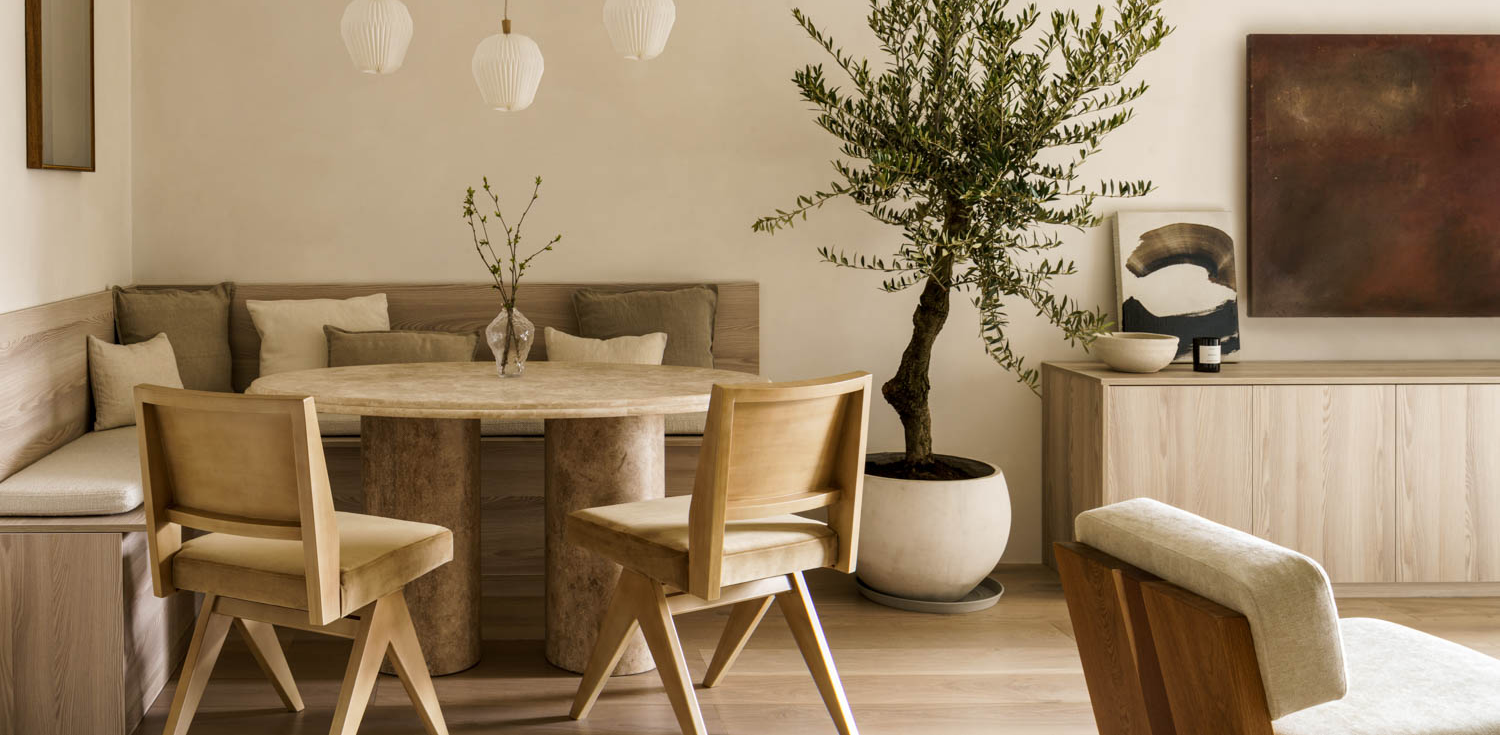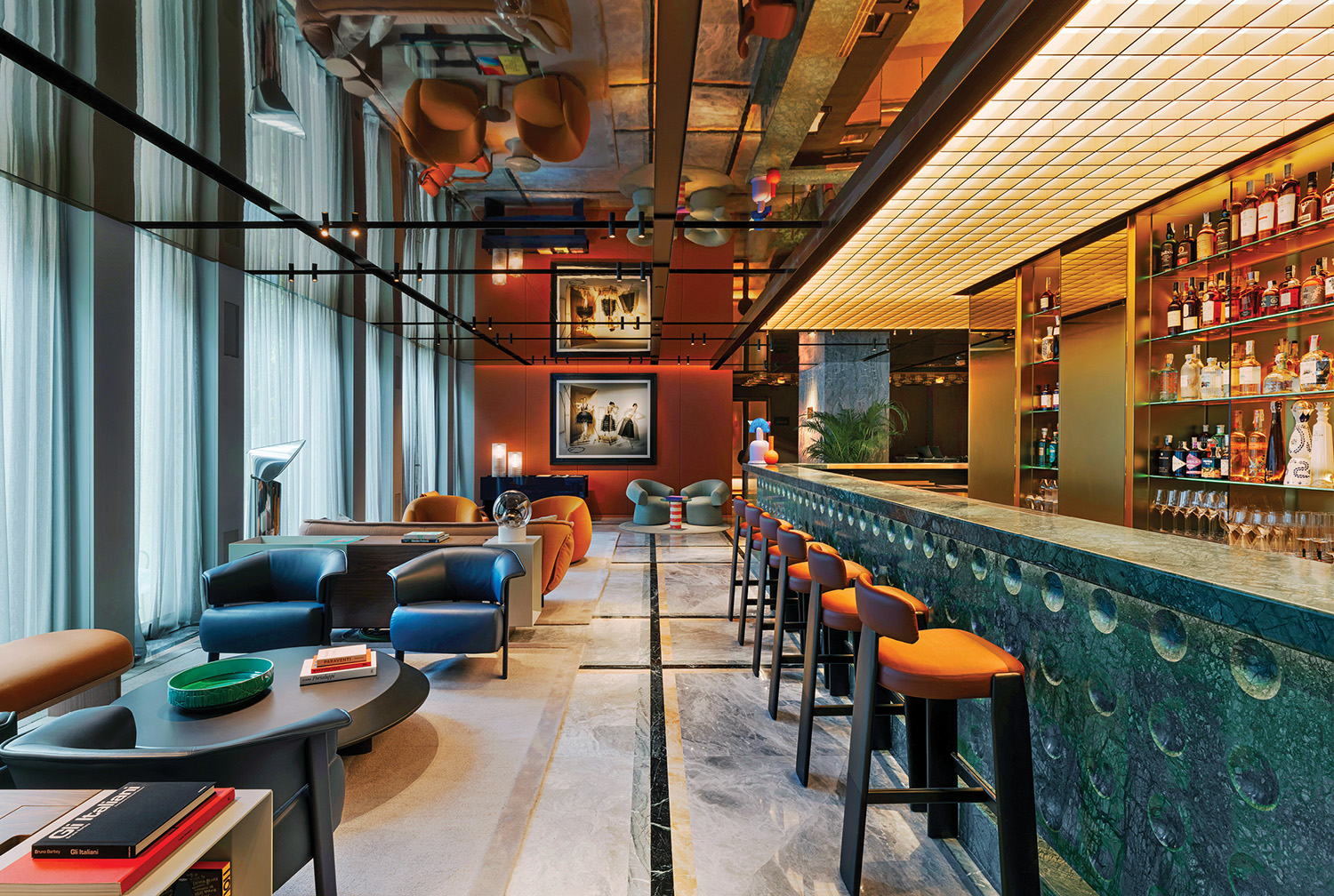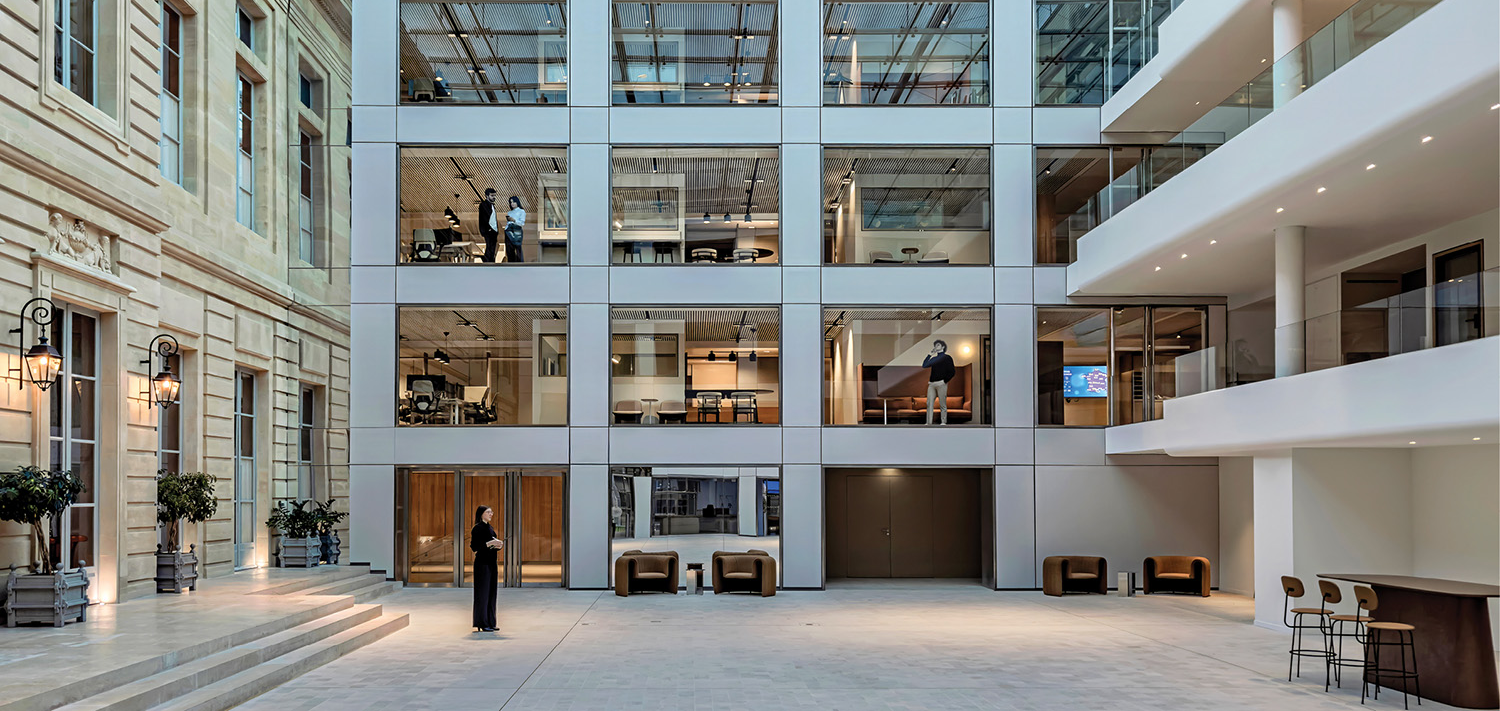G Is For…: Google’s Eco-Friendly Chelsea Digs by HLW
Work for a while at Google, and you’re a Googler. Newbies, on the other hand, are Nooglers, HLW principal and director of interior architecture Kimberly Sacramone explains. When her firm started working for the Internet search engine in 2006, she flew out to the Googleplex, as headquarters in California is called, to absorb the insider lingo and Don’t Be Evil culture. Then she reinvented those collegelike start-up interiors for an office the size of an entire city block-in a high-rise warehouse in Chelsea. Gypsum-board got painted the company’s quartet of cheerful corporate colors: cerulean, shamrock, gold, and maraschino cherry. Her primary design flourish was a dynamic diagonal cutting through the floor plate, like Broadway through the Manhattan street grid.
Since that first collaboration, Sacramone has tackled increasingly ambitious interiors for the company. “Google has evolved,” she says, because the Googlers have responded to design with a capital D. “It leads to better productivity,” New York facilities manager Adam Lutz says. After the acquisition of an 80,000-square-foot floor, just upstairs from the original space, Sacramone raised the bar even higher—and had a lot of fun doing it. For example, to supplement the conventional elevators that connect the two levels, she punched two holes in the slab between and installed steel ladders, enclosed in protective cages. At the top and bottom of each ladder hang a bunch of fabric totes for laptops, keeping users’ hands free for the climb.
Working alongside sales, marketing, and consumer-operations staff, the engineers inhabit less than 50 percent of the new floor, but it’s 100 percent nerd heaven. Google’s Eastern U.S. facilities manager, Laura Gimpel, opens the door to a windowless soundproof room filled with drums and electric guitars amid a tangle of cords. Clearly, these are not your father’s engineers. “They fit the stereotype in that they’re brilliant,” Sacramone jokes.
In one of the three cafés, a rooftop theme inspired the inclusion of a bona fide water tower as well as a humorous pendant fixture modeled on an old-fashioned outdoor TV antenna. A fake bird perches on the antenna—in case anyone missed the punch line. Photomural wall covering shows the skyline as seen from that precise vantage point, as if a wall weren’t in the way. (For those in the know, a penny set into the floor marks the spot where the photo and the view out the windows line up perfectly.) In another café, the floor mosaic was inspired by the motif on the New York-kitsch Greek coffee-shop paper cup. When Lutz wanted some real cups to hot-glue into a display for a vitrine, his team Googled the words Anthora coffee cup to find a supplier of the cups online, natch.
Continuing the New York theme, two meeting rooms, each under 200 square feet, are outfitted as cluttered studio apartments. In one of the rooms, the “cocktail table” is a bathtub topped by a rectangle of clear glass. The other room has sofas made from bathtubs with a side sliced off. In both rooms, photomurals show full-size domestic tableaux, their illusion strengthened by the addition of real objects, such as a functioning wall clock.
The library’s man-size wing chairs sport a Wall Streeter’s wool suiting as upholstery, plus neckties sewn onto the backrests. More local imagery transforms the doors on a row of videoconferencing booths. Members of the creative team ran around the city photographing various doorways, whether freshly painted or battered and defaced, and a graphic designer formatted the images for printing onto a self-adhesive membrane.
Aiming for LEED Platinum certification, Gimpel asked the team to go the extra mile to look at materials through the lens of the Pharos Project, a comprehensive green-building information source that helps designers gauge total environmental impact. Just off the elevators, a full-height accordion display tells the eco story. Meanwhile, the latest information on materials is available from signs posted throughout. Each sign features a quick-response code that can be scanned with a smart phone. “Googlers love data,” Sacramone says with a wink.
They love questions, too. Gimpel recalls asking, “What if cubicles could be built like Legos?” HLW posed the challenge to several office-system manufacturers, and one came up with a kit of parts based on photography equipment. There are pedestals for files, vertical or horizontal poles for dividers, tackable felt privacy panels, and polycarbonate fins for a sense of enclosure overhead. At move-in time, each engineering group customized its own desk layout. Fortunately, Lutz anticipated the resulting mayhem by providing a plethora of electrical connections under a modular raised floor. The carpet tiles correspond exactly to the panels beneath, so everything doesn’t need to be ripped up as configurations change.
The “cubicle” system is mostly all white except for small clamps in Google’s signature colors. “They’re kind of bright, so we used them sparingly,” Sacramone explains. She ducks into a supply closet filled with clamps, poles, and panels, like Tinkertoys for adults. A posted note invites the engineers to rummage and play. Turns out one Googler designed and built a catapult—outside-the-box thinking, for sure. Another assembled a park bench for visitors.
PROJECT TEAM
Susan Boyle; Cristen Colantoni; Robert Verhaeghe; Jane Moos Cohen; John Capobianco; Kristine Huber; Chang Kwon; Susan Kaplan; Jaclyn Whitaker; MIke Tegnell; Chris Jessip; Marta Bojovic; Ann Mariani: HLW. Graham Hanson Design: Graphics Consultant. Milrose Consultants: Code Consultant. Gilsanz Murray Steficek: Structural Engineer. Robert Derector Associates: MEP. H&H Woodworking: Woodwork. Benchmark Builders: General Contractor.


